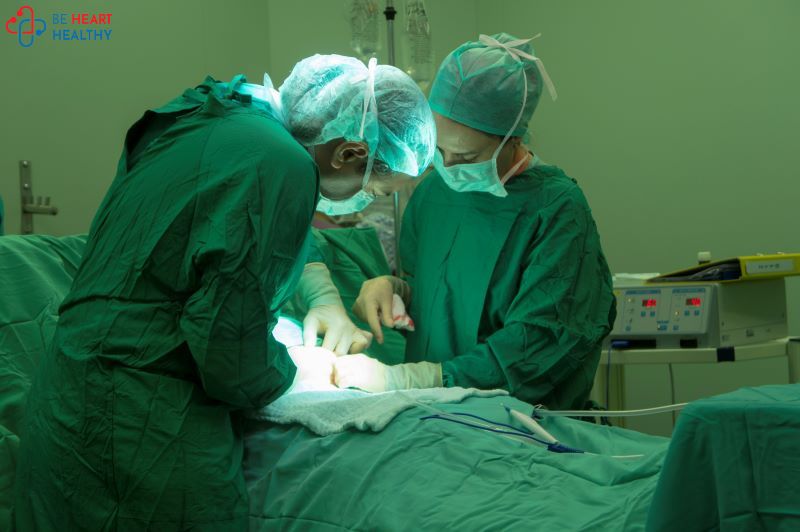What is a Coronary CT?
Coronary CT, or in cardiologist’s terms, a coronary CT angiography, is a non-invasive medical imaging procedure that uses x-rays to look at the status of the blood vessels of your heart after those structures are enhanced using a dye [1]. Rather than a conventional x-ray that gives a 2D image, this procedure provides us with a computerized reconstruction that can be viewed in multiple planes, angles, and cross-sections in great detail.
Why do a Coronary CT?
Although a plethora of imaging modalities such as MRI, X-ray, normal CT are available in medicine, an angiogram is one of the best ways to study the health of blood vessels, their integrity and anatomy, blood flow, and any deposits.
Studies show that the use of CT coronary angiography in identified angina patients has created greater diagnostic certainty, more appropriate use of invasive angiography, and a reduced risk of fatal and non-fatal myocardial infarction.[2]
This is a relatively new development in the field compared to the conventional angiogram, which is invasive in the sense that it involves threading a thin tube called a catheter through an artery in your arm or leg up to the blood vessels in your heart.[3] This procedure, however, has a therapeutic use in stenting a blocked vessel, which is often lifesaving.
When to do a Coronary CT
As discussed, this procedure allows us to view the blood supply of the heart. Therefore, we can use it to check for any issues with it. Any cardiologist near you may order you a CT angiogram if you present with symptoms such as,
- Pain or discomfort in your arms, left shoulder, back, neck, jaw, or stomach
- Irregular heartbeat or arrhythmia
- Difficulty breathing
- Excessive sweating
- Indigestion or heartburn
- Light-headedness or dizziness.[4]
These are symptoms of a condition called stable angina. The purpose of the procedure is to diagnose this condition by confirming blood vessel narrowing in the heart. This is in accordance with the NICE (National Institute of Clinical Excellence) guidelines.
These guidelines also recommend coronary CT for patients with acute coronary syndrome, which is a more serious presentation of the aforementioned symptoms, leading to a diagnosis of either myocardial infarction (or heart attack), or unstable angina. However, the use of CT in these patients would be to rule out alternate diagnoses such as aortic dissection or pulmonary embolism and not to diagnose acute coronary syndrome.
Other more uncommon uses of this procedure are assessment of the patency of bypass graft, which is inserted by a surgery done in patients diagnosed with serious coronary vessel blocks, diagnosis of congenital coronary artery abnormalities, which means defects present from birth, and visualization of cardiac veins.[5]
How a coronary CT is done
Prior to it, you will be asked to,
- Fast for 3-4 hours
- Limit caffein use (including herbal tea, cola drinks, coffee, and chocolate)
- Take all your normal medication
During the procedure,
- Your ECG will be recorded and checked for contraindications
- A cannula will be inserted into your hand through which a dye is inserted into your vein, which helps in imaging
- You might be given medication to slow down your heart
- Then you’ll be imaged within a CT scanner where you’ll be asked to sometimes hold your breath and breath according to their instructions
This is a simple procedure with minimal risks— but will be contraindicated if you are,
- Allergic to the dye or any medication used in the procedure
- Contraindicated to use the heart slowing medication
- Pregnant
- Has any arrhythmias detected by the ECG [5]
Anyways, there is nothing to worry about as this procedure is done by the most sought-after Mumbai heart hospital, The Valve Clinic, in the presence of a radiologist and trained technical officers, and its benefits vastly outweigh the neglectable risks.
Afterwards, our specialist team will evaluate the reports and treat you accordingly while providing the best possible care.
References
- Mayoclinic.org. 2021. CT coronary angiogram – Mayo Clinic. [online] Available at: <https://www.mayoclinic.org/tests-procedures/ct-coronary-angiogram/about/pac-20385117>.
- Adamson PD, Hunter A, Williams MC, et al
Diagnostic and prognostic benefits of computed tomography coronary angiography using the 2016 National Institute for Health and Care Excellence guidance within a randomised trial
Heart 2018;104:207-214.
- Uofmhealth.org. 2021. Computed Tomography (CT) Angiogram | Michigan Medicine. [online] Available at: <https://www.uofmhealth.org/health-library/bo1097>.
- Angiogram, C., 2021. CT Coronary Angiogram – St Vincent’s Heart Health. [online] Svhhearthealth.com.au. Available at: <https://www.svhhearthealth.com.au/procedures/imaging/ct-coronary-angiogram>.
- Feger, J., 2021. Coronary CT angiography (CT protocol) | Radiology Reference Article | Radiopaedia.org. [online] Radiopaedia.org. Available at: <https://radiopaedia.org/articles/coronary-ct-angiography-ct-protocol>.



